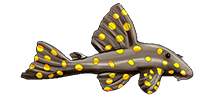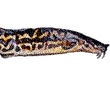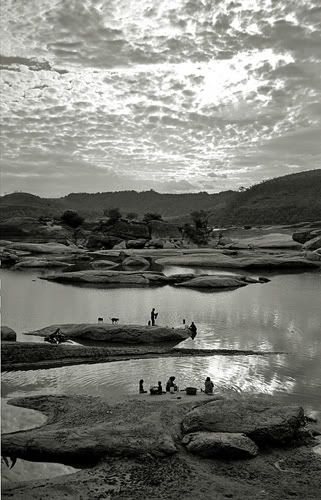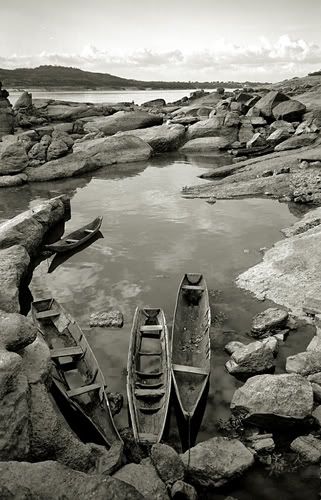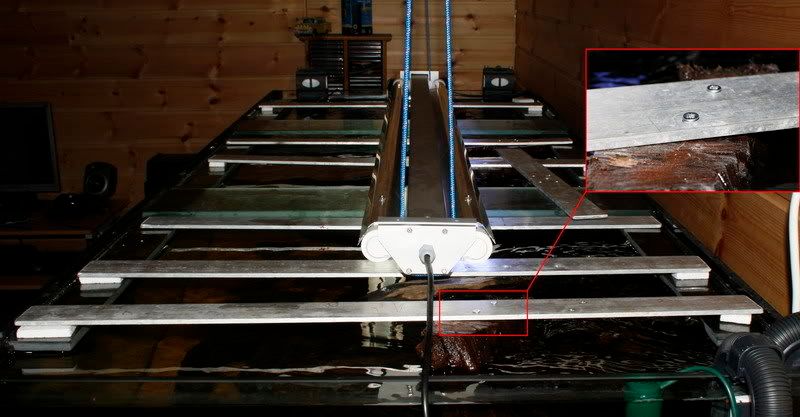Hi Larry, Andreas and guys... I think Andreas tank is as good as it needs to be to make these fish feel at home. Though some people advise that wood is not necessary, my fish (L128, L200, L137) went through a good amount of bark and wood for several months producing large amounts of "wood byproduct" (hard black pooh that is!)... so even if they are not technically panaquelike as to their tooth structure, they do eat wood when provided. Now, it's not that I'm a specialist on these loricarids and I'm just talking of my observations in my tank.
As to their natural habitat/diet, L128 is found mostly clinging to the boulders and slabs in areas of swift water movement near the banks of the Orinoco mainstream and in many tributaries near Puerto Ayacucho and at least to Caicara, in the tributaries that come down from the Guyana highlands. They mostly eat whatever life form adheres to the rock surfaces and sand they graze on, including forms of insect larvae, worms, crustacea and algae/plant matter.
The pics on the first page of this thread (posted by Firenzenz), very beautiful BTW, are near the Atures Rapids. Actually it is L128 that you will find in the area. It is precisely in this rocky area in the pics that L128 has its habitat. L200 is from further uptream, into the Rio Ventuari, Orinoco's largest Guyana highland tributary.
These pics were taken during the dry season (probably between late December and Early April). This same area gets pretty rough in the rainy season. The image showing some canoes in a "remanso" (rest area formed by large boulders and slabs) would be the right place to find large adult P. altum and M. insignis when looking in the Orinoco maintream, but you may also encounter some pirahna.
The dominant substrate under and around the boulders and slabs is a medium coarse white sand of limestone origin, but it is very worn out chemically speaking due to its geological age (it comes from the Guyana shield)and exposure to the strong acid environment upstream.
One more thing... if it's true that Orinoco isn't the longest river in the world, you might be interested in knowing that it ranks third among the largest rivers in the world by volume of water transported. Only the Amazon and the Congo provide more freshwater to the world's oceans than the Orinoco despite the fact that the drainage areas of the first two are much, much larger than that of the Orinoco. This has a biological significance in that the Orinoco is a much faster system and hence, a general higher D.O. range which affects all living beings that have evolved in its waters. As a rule, many Orinoco fish species are less tolerant of low d.o than Amazon basin species (even if we find many species/subspecies in common).
I'm sure Shane could give a lot of his insight here.
Ed
For some reading:
http://mk.geog.uu.nl/homepages/Paul/Orinoco_rap_9.PDF